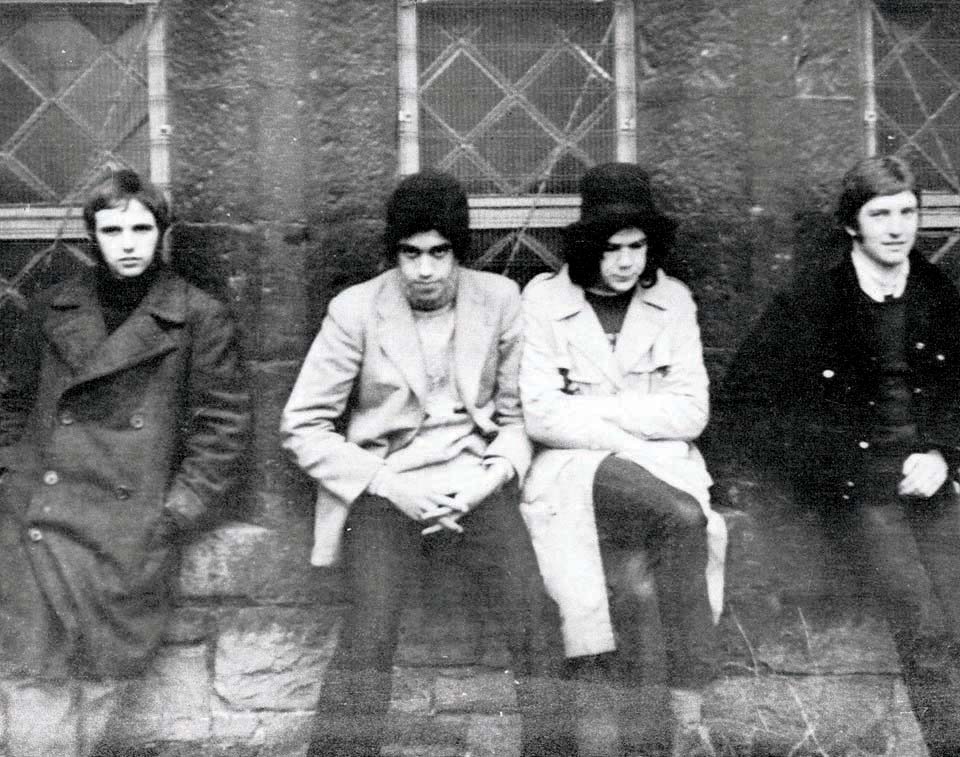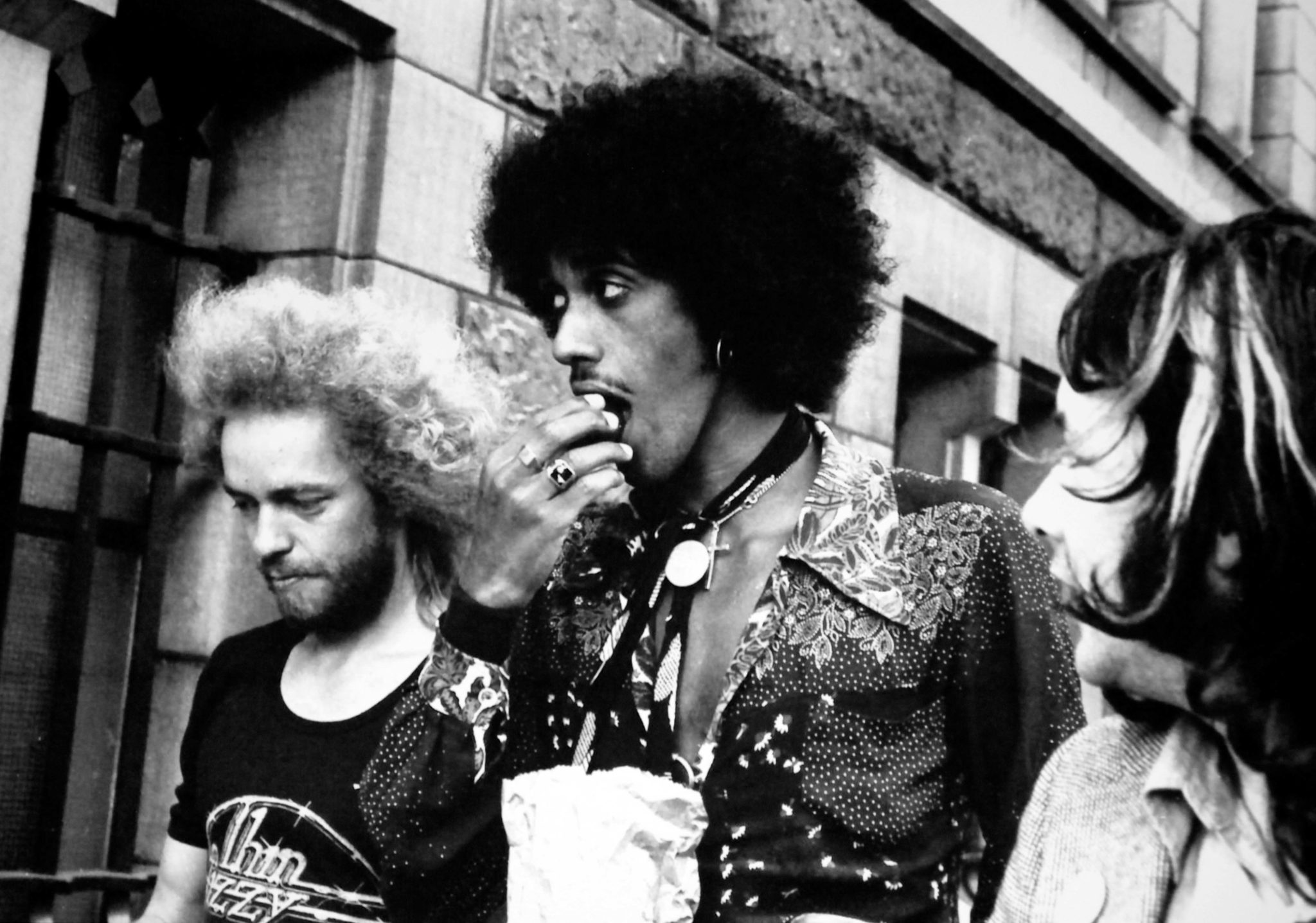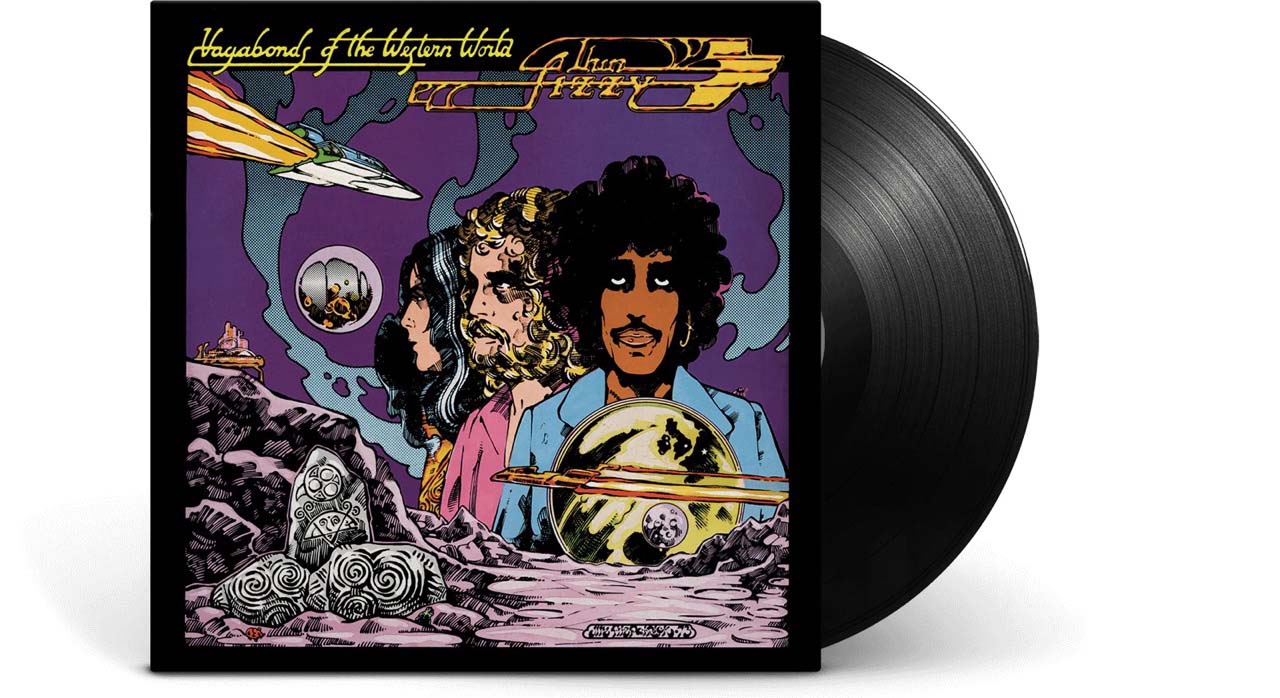- Music
- 11 Jan 24

Fifty years on, Decca Records have reissued Thin Lizzy’s breakthrough album, 1973’s Vagabonds Of The Western World, in deluxe CD and LP sets, featuring rarities, radio sessions, unreleased music and a Dolby Atmos mix – and including the iconic non-album hit, ‘Whiskey In The Jar’. Drummer Brian Downey discusses the making of the then-threepiece’s early masterpiece...
A question for you: which was the ultimate version of Thin Lizzy? Mosty people would opt for the four-piece that made Live & Dangerous. But there are fans who still hanker after the original three piece line-up featurung Phil Lynott, drummer Brian Downey and guitarist Eric Bell. The 50th anniversary re-release of the band’s third album Vagabonds of the Western World may just bolster their case.
What better man than drummer Brian Downey to take us back to the Dublin beat scene out of which Thin Lizzy emerged.
“I had just turned 13 when I played with The Liffey Beats,” Brian laughs. “But at that time, loads of guys were pretty young when they started to play guitars, drums and bass. There was a rock and roll thing before obviously, with Elvis, Gene Vincent and Bill Haley. But when The Beatles came out, that’s when young kids really started taking notice of music.
“I was in a Pipe Band, and my dad was a drummer, so there were always drums around the house. There was an opportunity to play all the time, even though my mom wasn’t too pleased with the noise! So, I had an advantage over most people, because I was playing since I was about 8 or 9.”
ERIC IN THE DRESSING ROOM
Advertisement
Still barely shaving, Brian was a veteran of three bands – The Liffey Beats, Mod Con Cave Dwellers and The Black Eagles with Phil Lynott.
“That was a great period,” he reflects, “because we were still learning the ropes. We were playing stuff from the radio; it was an apprenticeship for being in Sugar Shack and Thin Lizzy. The Black Eagles played in clubs like The Flamingo off O’Connell St., run by the Gunning brothers, Club Go Go in Sackville Place and the 5 Club on Harcourt St.
“It was an amazing experience. We covered stuff from the charts – The Beatles, Stones, Kinks, Hollies – and some soul stuff coming from Phil – Otis Redding, Sam & Dave - as well as stuff like Jim Reeves for the older crowd. We were trying to keep everybody happy. After The Black Eagles broke up, Phil went into a band called Karma Sutra and I went into Sugar Shack.
“We were getting club dates, but we were mainly a blues band and that was our big handicap. Blues wasn’t really popular back then in Ireland. It was slowly coming in through bands like The Few and Henry McCullough’s Eire Apparent. However, it was difficult to get gigs and when we did, people weren’t really sure what they were listening to, so we’d have to mix it up with some popular soul tunes.”
After Sugar Shack broke up, Brian started hooking up with Phil in The Bailey on Duke Street. It was 1969…

Skid Row (l to r): Brush Shiels, Phil Lynott, Gary Moore and drummer Robbie Brennan
Advertisement
“Phil had joined Skid Row,” Brian relates. “But at some stage, he went off to Manchester to get his tonsils out and when he came back, he discovered he wasn’t needed! So, we got together and formed a band called Orphanage – Phil, myself, Terry Woods for a while, Joe Staunton on guitar, Pat Quigley on bass. Phil was singing, he wasn’t playing bass.
“We had a gig in the Countdown Club, off Mary Street and Eric Bell turned up with Eric Wrixon. During the interval, they both came into the dressing room. Eric Bell said, ‘Man, it sounds really great. I’d like to have a chat with you guys after the gig’. I said, ‘What about?’ He replied, ‘Well, I intend to form a band, I’m just wondering are you guys available?’
“So, we played the rest of the gig. Later, Eric was back in the dressing room and told us, ‘I just dropped a tab of acid before the gig, you sounded really brilliant!’ Phil enquired, ‘You’re tripping at the minute?’ Eric goes, ‘Yeah, I’m pretty out of it, but I’m really interested in getting together with you guys. The band sound amazing’. I said, ‘I’m not surprised!’”
BANDS IN THE SAME BOAT
It all kicked off from there.
“We didn’t know what Eric was like playing guitar,” Brian recalls. “He’d played with Van Morrison’s Them, but he wasn’t on any of the albums or singles. When we started to rehearse, we discovered Eric was a brilliant player. Phil wanted to play bass, but Eric had an idea of somebody else playing bass. When Phil announced it, he said, ‘I have my bass here’ and Eric said, ‘Let’s play and see what happens’.
“Phil took the bass out – an old Fender Jazz that he bought off Bobby Ballagh, who was playing with The Chessmen Showband at the time. It was later stolen out of our van when we played The Marquee Club in London. We jammed some blues numbers. Phil had told me he was practising five hours a day on the bass – Pat Quigley and Brush Shiels were giving him lessons – so Phil really held his own, jamming through those numbers. I was really surprised, because we’d never played together before. Eric was also pleased, so we had a band together. Eric Wrixon played keyboards – the original Thin Lizzy was a four-piece.”
Advertisement
Other bands’ material was a core part of their repertoire at first.
“We got a set together with Hendrix and Deep Purple covers,” explains Brian. “Then Phil said he’d a few original tunes. He played them on the acoustic guitar and some of them ended up on our first album. We were getting some publicity, especially from New Spotlight magazine. We were regarded as a supergroup, because I came from Sugar Shack, Phil from Skid Row, Eric Bell from Them and Eric Wrixon from The Trixons.”
Reaction to the gigs was good and the band recorded a single, ‘The Farmer’, at Trend Studios with John D’Ardis. Further tracks from Trend sessions appeared on a CD that came free with a 2006 issue of Hot Press. Lizzy manager Brian Tuite persuaded Decca to come to Dublin to listen to the band, after which they were offered an album deal and took the boat to England, sans Eric Wrixon. They were now a trio.

Thin Lizzy by Liam Quigley
“We recorded our first album, Thin Lizzy, in five days” Brian recalls. “It was mixed in two days, but we weren’t allowed into the mix. Back then, you weren’t – they were still in white coats in Decca Studios. Nick Tauber was the guy who mixed our albums, and he became our producer for Vagabonds, but we never met him.”
Returning to Ireland to fulfil dates, they then moved over to London full-time, living in West Hampstead. Across the rest of 1971 and ‘72, they played countless times in London, released their sophomore album Shades Of A Blue Orphanage, and gigged relentlessly across the UK.
Advertisement
“You name it, we played it,” Downey notes. “But we were finding it very hard to break through. We were just another band amongst hundreds in London, so it was difficult to land the good gigs. But we were getting a reputation. All of our live reviews were pretty good. So we were optimistic, although the money we were making was pretty poor and the accommodation was very basic. But most of the other bands were in the same boat.”
NOBODY COULD LABEL US
A stroke of luck occurred when manager Ted Carroll (name-checked on ‘The Rocker’) stumbled upon Lizzy jamming ‘Whiskey In The Jar’ and persuaded the band to record it.
“Phil wanted to record ‘Black Boys On The Corner’ as the single with ‘Whiskey In Thee Jar’ as the b-side,” Downey explains. “Everyone agreed. But upon hearing both songs, Decca’s Dick Rowe wanted ‘Whiskey’ as the a-side. Phil disagreed, but Rowe wasn’t for turning. He said, ‘Take it or leave it guys’, and lucky enough we did.
“It took ages to get into the charts. It was regarded as a sleeper, but it went top 20, then top 10, then we appeared on Top Of The Pops and it went to number 6. Tours started coming in. There were bigger venues, better money. We never looked back.”
Eric Bell left the band abruptly on NYE 1973, bringing to an end Thin Lizzy, Mark I. It was the incendiary trio of Lynott, Downey & Bell, whose apex is undoubtedly Vagabonds Of The Western World.

Advertisement
“It was a great album,” nods Brian. “The first album was a good record, everybody was happy with it, but for the second album, we had very little rehearsal and we were still writing the songs as we were recording. It just didn’t gel.
“For Vagabonds, most of the songs had been rehearsed and Phil’s songwriting really started coming into its own. ‘The Rocker’ is on that album, which was in Thin Lizzy’s set until we finished. Eric’s solo on it is unbelievable, still fresh even today. It only got into the lower regions of the top 50, but everybody started taking notice of Thin Lizzy after that album.”
Still, things were looking up.
“We were getting a reputation as a progressive sort of a band,” says Brian. “Even though ‘Whiskey In The Jar’ was a traditional Irish song, when people started listening to Vagabonds, they discovered another side of Thin Lizzy. The first two albums were chalk and cheese and Vagabonds was different again.
“Whether it was good to have that diversity is anybody’s guess, because people couldn’t decide whether we were soft-rock, folk-rock, heavy rock. People couldn’t really pin us down until later, when we got Brian Robertson and Scott Gorham in and became a hard-rock band. But up to that, nobody could really label us!”
• The Vagabonds Of The Western World reissue is out now.










